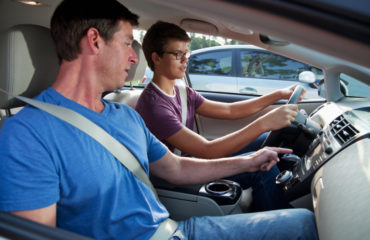Do you drive to work in the morning? Has school started in your city? If you answered “Yes” to these two questions, then this article is for you. Everywhere in the United States our youth are going back to school after a summer of fun and excitement. With children walking to school, riding bicycles or on the school bus, we need to remain alert to the dangers so no child is injured, or worse, killed. It is time to refocus our attention while driving. The National Safety Council has developed a number of important tips for motorists and “Back to School.”
Sharing the Road with Child Pedestrians
In 2011, of all children between the ages of 10 and 15 who were killed in traffic crashes, one in five were pedestrians.[1] Motor vehicle crashes were the leading cause of death for children ages 11 through 14 in 2009.[2] In other words, how we drive makes a difference. Here are a few important tips to remember:
- Never block the crosswalk when stopped at a red light or stop sign. If a child has to go around your car, you are putting the child at additional risk.
- Always stop when indicated by a school patrol sign, school patrol officer or designated crossing guard.
- Remember that children are unpredictable. When driving through a residential area or school zone, stay attentive and look out for the child that darts out into the street.
- When in or near school zones, take extra precautions, and give driving your full attention–do not use mobile devices, not even hands-free.
Sharing the Road with Bicyclists
Remember that bicyclists have the same rights and responsibilities you have as a driver of a motor vehicle. But also remember that some of those riders are children and they are still mastering their skills on a bike. As the adult, you need to stay alert. Is the bicycle coming towards you on the same side or going with traffic? It makes a difference. If you are going in the same direction and passing the bicyclist, leave at least 3 feet between you and the bicycle. Here are a few more tips:
- When turning left, and a bicycle is coming towards you, wait for it to pass before completing the turn.
- When following a bicycle, be alert for sudden turns by a child who may not look or signal beforehand.
- Watch out for bicycles coming out of driveways and from between parked cars.
Sharing the Road with School Buses
While there is always discussion about safety and school buses in general, the bottom line is that riding the school bus to school is the safest way to travel to school.[3] Yet, there is a dangerous moment for children: while getting on or off the bus, a car illegally passes the stopped bus. Every state has made it illegal to pass a school bus that has stopped to pick up or drop off children. It is our responsibility (and legal requirement) that we stop—for the safety of our children. Here are some additional tips:
- When a bus is slowing for a stop, the yellow flashers will be turned on to alert you that it is stopping; red lights flash while the bus is completely stopped
- When a bus is stopped on an undivided highway, traffic in both directions must stop.
- The area 10 feet around a school bus is the most dangerous for a child. Give the bus plenty of space, allowing the children to get on and off.
It is an amazing time right now, with the summer winding down, the fall colors around the corner, and youth everywhere going back to school. It is also an important time to remember that our actions have consequences. Follow the rules: don’t pass a stopped school bus, give bicyclists space, and allow pedestrians to cross the street without concerns. Let’s make sure our youth get to school and learn their lessons as we, as motorists, learn ours.
For additional tips, and suggestions for parents on getting their child ready for school, go to the National Safety Council and check out the Back to School safety tips.
NTSB Chairman Hersman speaks about School Safety on August 15, 2013.
[1] Traffic Safety Facts: Pedestrians. 2011 Data. National Highway Traffic Safety Administration. DOT HS 811 748.
[2] Traffic Safety Facts: Children. 2011 Data. National Highway Traffic Safety Administration. DOT HS 811 767.
[3] Learn the Facts, Play it Safe. National Highway Traffic Safety Administration and American School Bus Council. Obtained from schoolbusfacts.com.








